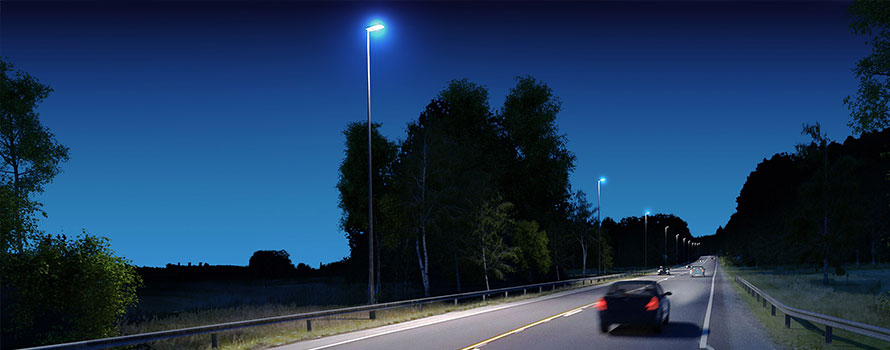
The need for energy efficiency in public lighting is urgent if we are to achieve the set climate targets. In addition, public lighting can account for up to 30-50% of the total electricity consumption in a municipality and can be a heavy item in the maintenance budget. New guidelines will accelerate public investment in climate-smart land cost-effective sighting in Sweden.
Renovation of road lighting and replacement of LED luminaires is associated with a significant saving potential. The efficiency of LEDs is expected to continue to increase in the coming years, and the fall in prices for LED luminaires is expected to continue. Therefore, Lighting Metropolis – the cross-border initiative in Greater Copenhagen Region – has prepared new guides to facilitate work for municipalities and regions.
– The goal is to accelerate the replacement of old lighting in public environments, with the latest climate-smart solutions. It saves energy and CO2 and provides better lighting. The guidelines contain a number of proposals for quality requirements that municipalities and regions can use when buying new lighting. This allows them to ensure that they receive high quality lighting for the benefit of the users. For indoor lighting, it also describes the quality requirements for circadian rhythm lighting and flicker – new topics that can affect how users are affected by lighting, says Flemming Jørgensen, project manager, Lighting Metropolis at Gate 21.
With the right lighting, municipalities can achieve their set goals for energy and climate, security, sustainable travel, equality and much more. But to get there, the municipality needs to have a clear plan and goals for how good lighting should be from an economic, ecological and social perspective. Based on that information, they can then set the right requirements in procurement and get an outdoor lighting, which with the right technology, gives the right light, at the right place, at the right operating and maintenance costs.
“The new guidelines will be of great help to us in Bjuv, in our work to create a safe, comfortable and sustainable urban environment, and to create the opportunity to promote public transport with the help of light,” says Lennart Andersson, project manager, Bjuv municipality.
Today, only 20 percent of the public lighting in Greater Copenhagen is energy efficient. The cross-border Lighting Metropolis initiative harnesses this potential to consolidate the region as a leading region for sustainable lighting solutions – through large-scale implementation of qualitative and energy-saving LEDs.
The guidelines are aimed at all municipalities who want to ensure full utilization of the favourable economic conditions, while at the same time ensuring a high quality of future solutions for road lighting,” says Kenneth Munck from the Light Bureau.
-To ensure good project process and optimal lighting solutions at the municipalities, there has been a great focus on having relevant project tools that they can use in their renovation projects for indoor lighting. The fact sheets provide an overview of the details of projecting a good lighting system. says Steen Tibert Bisgaard, lighting specialist at NIRAS.
Lighting Metropolis also contributes to competence development, knowledge sharing and assistance in completing tenders. It is expected that participating municipalities and the Region of Skåne together will invest 177 million Swedish kronor in concrete LED projects. You can read more about Lighting Metropolis here.



